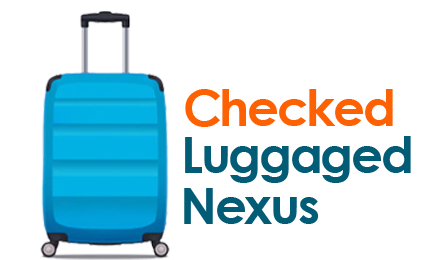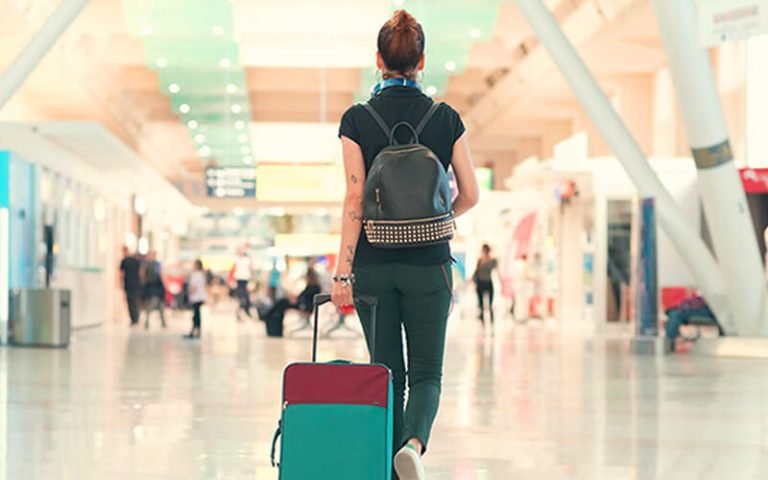What Luggage Can You Take On A Plane?
If you’re about to embark on your next trip, you may be wondering, what baggage can you take on a plane?
You can carry any luggage onto a plane as long as it meets the airline and regulatory agencies’ TSA requirements.
It includes the general dimensions of luggage and then breaks the types of luggage into two main categories: carry-on luggage and checked luggage.
Table of Content
Two Types of Luggage
There are two types of luggage to consider when flying: carry-on luggage and checked luggage. Exactly how these are defined may vary from airline to airline or region, but you can probably expect to see them defined as they are here.
Carry-on luggage is those bags that are carried onto the airplane with you.
The kind of luggage that fits in the overhead bins of airplanes are called carry-ons, and most airlines allow you to check these items with you when you board.
Baggage allowance varies by airline, but the average passenger can carry one checked bag plus one to two small carry-on bags.
They’re checked with the airline, taken, and placed into a separate cargo hold section.
Travelers must surrender control over how these bags are handled at the airport, and when they arrive at their destinations, they may not always recognize their bags when they take them.
So in this post, we have broadly defined what the two types of luggage one can take on an airplane are. Q:
Carry-On Luggage
A carry-on bag is any bag you carry onto an airplane with you.
Most airplanes have overhead compartments that are located above your seat.
This luggage is the easiest to manage and always accessible, whether on a business trip or vacation.
This is a bag you’ll need to pack for yourself if you want to bring more than the bare essentials. You’ll need a bag that will hold everything from your toiletries to your clothes to a change of clothes for the baby.
Carry-On bags will always have a size limit.
In addition, the exact dimensions of this limit may vary from airline to airline.
Some airlines have a maximum carry-on size limit, and others do not. For example, American Airlines allows passengers to check in two bags that are 22 x 14 x 9 inches (56 x 36 x 23 centimeters) in size.
Whether traveling by plane, you must place your carry-on bag into the sizer, so the airlines know it will fit in the overhead compartment.
Furthermore, it’s worth noting that some airports have their weight limits. For example, flights from Shanghai and Beijing may have a weight limit of 22 pounds or 10 kilograms.
It is a good idea to double-check your airline’s baggage policy before you start packing, or if possible, when you’re about to purchase
This way, you can be sure you’ll be able to carry all your stuff to your destination while avoiding extra checked bag fees!
Personal Items bag
If you’re traveling with another piece of luggage that will fit in the broader carry-on category, such as “Personal Items Bag.”
This is a particular type of bag that you can travel to instead of the traditional carry-on bag. It will fit under your seat or into your seat.
This travel-size bag won’t take up any room in the overhead compartment or be challenging to access.
A typical schoolbag is a backpack or laptop bag (airlines don’t usually allow computers to be checked), or even a diaper bag.
This luggage category is meant for you to pack anything you’d like to have easy access to during your flight.
Note that not all airlines allow a carry-on bag to be stored in the overhead bin and a “personal item” bag.
In addition, “personal item” bags may have additional weight requirements that differ from standard carry-on size requirements.
The maximum dimensions for a personal item in a checked bag are 18 x 14 x 8 inches (or 45 x 35 x 20 cm).
I just wanted to remind you to always check with your airline to confirm their exact rules for checking in luggage, as they may be different than what you’re used to.
Checkpoint Friendly
All carry-on bags for yourself and your travel party should be “checkpoint friendly.” This is TSA’s term for the easily searched bags for contraband. The point is to pack your luggage so that it doesn’t take long to screen it through TSA security.
For example, the TSA’s general guidelines for carry-on bags include storing all liquids in clear, quart-sized plastic bags. Any electronics are easily accessible to be removed from the bag (in particular, laptops must be x-rayed for security reasons).
If you check your bag, TSA guidelines will apply to you. They are listed below.
Checked Luggage / Bags
Checked bags are oversized pieces of luggage that exceed the size limits placed on checked luggage. The airline will charge you for the extra space it takes up, and the extra time it takes to find your luggage and get it on the flight.
Instead of lugging those heavy bags around, you check them with the airline, placing them in a cargo hold on the plane. It’s much like checking a coat at a fine restaurant.
We encourage travelers to entrust their checked bags to us and claim them at their destination. During this process, a traveler will wait at a luggage carousel for their bags to be unloaded and taken by an airplane to their destination.
This is why I always recommend sturdy baggage. Any checked baggage should be sturdy enough for travel. Perhaps a malfunction during the loading or a severe case of turbulence during the flight knocked the luggage around. The potential for checked baggage to be damaged or mishandled somehow is never acceptable.
When buying or choosing a bag that you know will be checked, you should choose one that will stand up to its rigors, like the ones it might go through while in flight.
Higher-end luggage is often made of metal or plastic, which makes it safer than other options, such as soft-sided luggage, where your belongings could get crushed or lost.
Checked luggage will not go through the same security checks as carry-on bags.
If that’s the case, you’ll need to plan for security regarding your checked bags.
Any checked bag you’re bringing is subject to security screening by TSA agents. It might be randomly searched.
When traveling, ensure that your latches or zippers are secure and any sort of luggage lock you use is TSA-approved.
Specific categories of commercially available locks produced by Safe Skies and Travel Sentry can be opened with a TSA master key. Security personnel can cut other locks, so you need to know what categories are affected before you travel.
It’s good to check and see if your luggage lock is TSA-approved. You’ll recognize these locks by seeing the small, red logo on all TSA-approved locks.
A safer and more effective method than using genuine zippers to secure clothing items with zippers or laces is to use plastic zip-ties.
You should know that contraband and other items are banned from your carry-on bag.
The liquid container size limit is not just applicable to liquids stored in checked bags but also to liquids stored in carry-on bags. Some restrictions may apply regarding electronics.
You should always check with your airliner and applicable regulatory and security agencies to ensure you comply and do not suffer any mishaps.
Read More:
Does the Airport Scan Checked Luggage?

